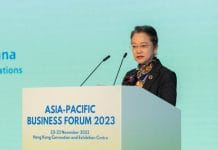The dynamic between employees and employers has been constantly shifting, often influenced by market conditions. In the post-pandemic job economy, the pendulum swung to the side of the employees as borders reopened and economies rebounded last year. Even though hiring is now easing due to the looming recession, talent who are confident in their desirability are not deterred and they may actually have a stronger motivation to look for a new job that meets their needs, in light of the rising inflation and consumer spending.
The situation today is akin to a scene between a customer and a salesperson, where the employee is like a customer who has the luxury of choosing from a variety of brands before making a decision. This is also a key finding from a study by SEEK, the Boston Consulting Group, and The Network, a global alliance of recruitment websites, called “What Jobseekers Wish Employers Knew: Unlocking the Future of Recruitment”. The report showed that up to 70% of jobseekers in Southeast Asia and Hong Kong believe they hold the cards in negotiating power, and approximately 1 in 3 are actively looking for a new job.
At a time where the decision-making leans more heavily on the employee, the question for businesses who are looking to employ would be: how to attract, recruit and retain top talent under such circumstances?
The answer lies in the hiring journey. Businesses will need to rethink their approach to hiring and to HR and start treating existing and potential employees as if they were servicing customers. They should think in terms of an end-to-end process that allows for interaction, engagement and flexibility, and think in terms of win-win outcomes when aiming to seal the deal with top talent.
Best practices that can help optimise the hiring process can be gleaned from the aforementioned report, which surveyed more than 97,000 respondents in Hong Kong and Southeast Asia. The report opened our eyes to some interesting insights on how the needs of jobseekers has changed and how to make sure jobseekers and employees are being heard.
Paying attention to the recruitment process
About 1 in 2 jobseekers in Asia have indicated that they will reject an attractive job offer if they have a negative experience during the recruitment process, so it is important that employers pay close attention to making the entire hiring journey as flawless as possible.
In many cases, this journey begins with a job ad. Employers need to make sure their job ads are clear, transparent and informative, including showing the salary range early in the process.
To ensure a smooth journey, employers should also calibrate their approach and offer to match the profiles of the talent they want to attract, whether it is senior professionals with high expectations, young digital experts, or mothers returning to work. Many employees in Southeast Asia today prefer a hybrid work arrangement to a fully remote or on-site one, and businesses need to keep this in mind when presenting an offer to talent.
Honesty is always the best policy. Jobseekers can sense when employers are trying to “oversell”. Similarly, customers can tell when a salesperson is trying to push a particular product. Being too aggressive in trying to close the sale may backfire. Hence, just as with a sales scenario where customers need to be won over, employers should instead strive to have an honest conversation and establish trust when speaking to talent.
Jobseekers have also said they prefer employers to be open to negotiation while they are trying to make their decision. It is therefore critical that for this part of the journey, employers give them time and space to reach a decision, and to be available for further discussion, much like the customers who would like to have some time before making the purchase, especially when it comes to big-ticket items. It is also recommended that employers, like a good salesperson who proactively reaches out to their customers, drop jobseekers a friendly check-in call during the final leg of the hiring journey before closing the deal.
Making human interaction a priority
For many people, the pandemic has been a three-year period without sustained social interaction. Even though virtual meetings are now an accepted part of our lives and e-commerce is a boom to the economy, people still crave in-person contact. Face-to-face meetings are essential for people to connect, communicate effectively, and react based on nonverbal cues, such as body language and facial expressions.
The best way to set up human interaction would be during the interview, which is equivalent to the sales pitch stage, to introduce the jobseeker to the working environment between future colleagues or provide a demonstration of the product to the customer so they know what to expect after making the decision.
Exercising flexibility
There is no doubt that it is a competitive market out there, but employers should still strive to be flexible and be on the lookout for creative ways to increase their talent pool, somewhat like how salespeople should be creative in their sales and marketing tactics.
Firstly, for example, businesses can access new talent pools by being open to hiring overseas talent with the right skills or collaborating with integration programs for disadvantaged populations. Furthermore, having a diverse team encourages creativity, and cultivating different perspectives within an organisation has been shown to improve profitability. A McKinsey study in 2019 found that companies in the top quartile for gender and ethnic diversity on executive teams were 25% and 36% more likely to have above-average profitability than companies in the bottom quartile. This means that a diverse team of employees will reap greater business benefits.
Secondly, businesses should look beyond the usual markets and universities, and be willing to hire for 70% fit and train the remaining 30%. It is imperative first of all to determine if the talent have the necessary soft skills that are a good fit for the organisation, as hard skills can be acquired later through on-the-job training or upskilling courses to polish existing abilities.
Lastly, businesses should also look within and scrutinise their own internal talent pool. According to the report, one of the top reasons why employees leave their organisation and look for new jobs is career progression and upward opportunities. Therefore, before employers dip into the external talent market for new hires, they should first of all examine their own resources and see how they can maximise their talents and develop their skill sets by providing them with strong career paths and development opportunities.
By taking these measures, employers will be better able to enhance their hiring journey, increase their ability to attract and develop a strong, talented workforce, and prevail in the talent war regardless of market conditions.
By Paul Thomas, Chief People and Culture Officer, Asia, SEEK









